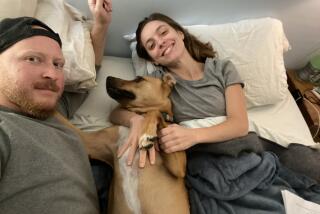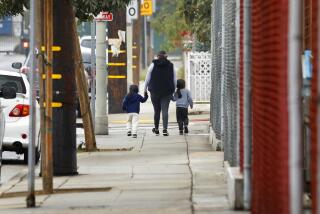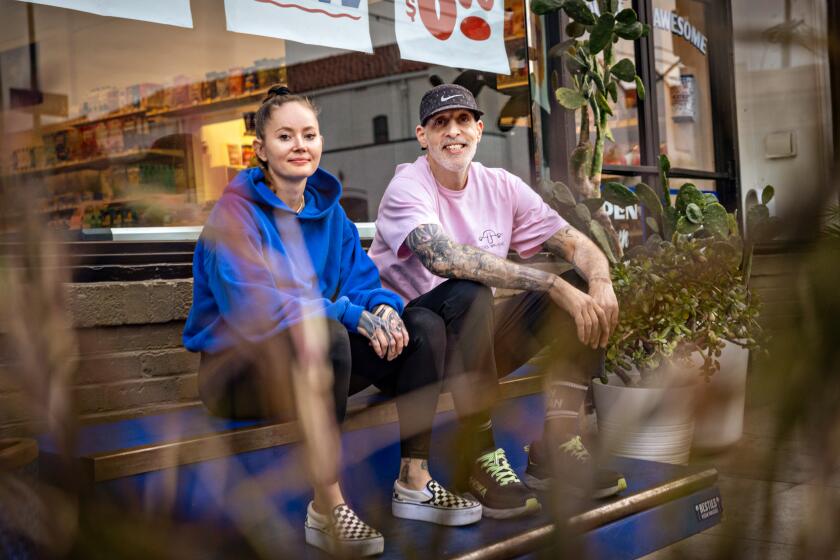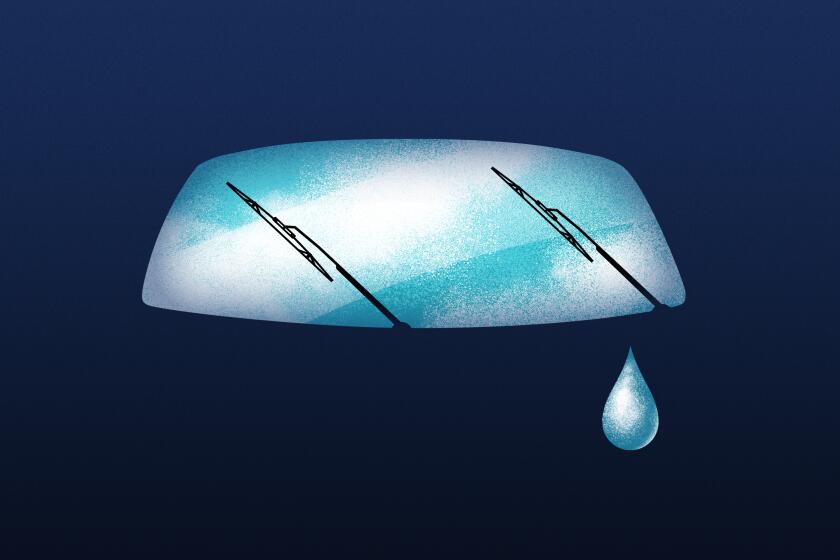Feeding a need
Breast milk is the most natural food on Earth and — some would argue — the most essential for a baby’s health. Still, it isn’t something every woman can produce. For those who can’t, the quest to obtain it can become a mission.
They spend hours a day finding their own donors. They surf the Internet, go to classes where new moms congregate, visit chat rooms and seek referrals from lactation consultants — all to find a nursing mother who’s producing too much of a good thing and has some to spare.
Two factors fuel the trend. One, mothers have learned the many health benefits of breast milk, thanks in part to the strong encouragement from the American Academy of Pediatrics and the World Health Organization. And two, new mothers have greater access to breast milk sources through the Internet.
Breast-feeding experts agree that the find-it-yourself movement is growing. But the nature of the Internet and word-of-mouth relationships make it difficult to determine whether hundreds, or thousands, of women are seeking breast milk from unlicensed providers.
The Human Milk Banking Assn. says that the demand for human milk has increased 37% over the last four years. Last year, the association reported that its active milk banks distributed more than 560,000 ounces of milk, compared with 410,000 in 2000. During the first two months of 2005, demand has outpaced last year’s by 15%, said Mary Tagge, secretary for the organization.
Although health experts don’t want to malign mother’s milk, the fact is, getting it from some place other than a milk bank could endanger an infant’s health.
“Breast milk is a human tissue and therefore carries the same risks that transferring other human tissues carry,” said Ron Harkey, section chief of tissue, blood banking and cytology surveillance for the California Department of Health Services. Babies could contract diseases such as AIDS and hepatitis, he says, or become ill from contaminated milk that hasn’t been properly collected and stored.
“Your next-door neighbor might be a wonderful person,” Harkey said, “but when it comes to sharing something like her milk, she could put your baby at risk.”
California and New York (but no other states) even have laws that prohibit unlicensed providers from distributing breast milk, which can transmit disease.
But some women are not easily deterred. They’ve heard for years about the brain- and immunity-boosting benefits of breast milk, and they’re determined to give their children every advantage.
Cynthia Dewey is among them. The Sherman Oaks woman and her husband adopted a newborn four months ago. She first tried, unsuccessfully, to get herself to lactate, which some women can do with enough breast stimulation either from a breast pump or a baby.
Then she considered going to a milk bank. But milk banks charge around $3 per ounce. A 3-month-old baby normally consumes 20 to 30 ounces a day. Dewey estimated she would have had to pay around $2,400 a month. “I can’t afford that,” she said.
Dewey never asked her doctor for a prescription — which milk banks require — because she knew she wouldn’t be able to afford the milk. Besides, some doctors only write prescriptions for premature or sick babies.
“It depends on how much of an advocate the doctor is for breast milk,” said Katy Lebbing, a lactation consultant and manager of the center for breast-feeding information at La Leche League International in Schaumburg, Ill.
Families who come to the milk bank typically have a child who has a medical condition that requires human milk, says Pauline Sakamoto, executive director of Mothers’ Milk Bank in San Jose. The state-licensed milk bank is one of only two in California and nine in the country. “These babies are often either premature or aren’t growing. Healthy adopted babies don’t get priority.”
As for Dewey, she fell back on a practice that’s been around as long as babies have been born: Getting breast milk from other mothers.
With her pediatrician’s encouragement, she went to classes for new mothers and put out an e-mail to more than 50 lactation consultants appealing for breast milk.
Eventually she cobbled together a supply for her new son. And she’s never regretted it.
“Since I didn’t have control of what the birth mother ate when she was pregnant with my son, I was compelled to give him the best start I could from the moment I could,” she said. “Every bottle of breast milk I give him makes me feel so good when I think about all it’s doing for his brain, his immune system and his heart.”
Health experts fear that this trend toward casual sharing will grow.
“Women have been sharing breast milk and hiring wet nurses forever,” said Karen Peters, executive director of the Breastfeeding Task Force of Greater Los Angeles. In other countries it’s fairly common. But here too, you hear of women co-nursing. “The problem with doing this in the 21st century is that sexually transmitted diseases can get passed through breast milk.”
The idea of casual sharing or Internet sales of breast milk upsets Sakamoto, whose milk bank is the nation’s largest. Last year, the bank sent out 178,000 ounces of milk, or more than 900 four-ounce servings a week. That output has tripled over the last six years to meet demand.
“You can’t know if the milk is clean unless it’s tested. A woman you know may seem like the perfect donor, but we’ve turned away donors whom doctors have approved based on our lab tests, medications they’re taking or their past medical history.”
To be licensed, human milk banks must test milk for five diseases: HIV/AIDS, hepatitis B and C, syphilis, and HTLV (Human T-cell Lymphotropic Virus, in the same class as the AIDS virus). They also test the milk for bacteria before and after pasteurizing it. “The screening may sound excessive, but in the bank’s 30-year history, we’ve never had a disease transmission,” Sakamoto says.
Centers caught distributing milk without a tissue license typically receive a cease and desist order from the health department. Technically, the act violates the tissue bank law and is punishable by fines and imprisonment, said Lea Brooks, a state department spokesperson.
“If a mother has extra breast milk, stores it in her refrigerator, then gives it to another mom, by law she requires a tissue license,” said Harkey. The law also governs those outside California shipping breast milk into the state.
But passionately pro-breast-feeding groups such as the La Leche League and the Breastfeeding Taskforce are hard-pressed to condemn the practice outright.
“Our first choice for these women is a milk bank,” says La Leche’s Lebbing. If a milk bank isn’t an option, Lebbing suggests women find a knowledgeable healthcare provider to assist in the transaction. The provider can screen the donor, do a blood test and educate both women about how to properly collect, store and transfer breast milk.
Women should find a family practitioner or pediatrician who advocates breast-feeding, says Lebbing. “Most would be willing to work out the arrangements and charge for a couple doctor visits plus lab fees.”
Most donors receive no money for this transaction and do it purely out of goodwill. Usually, the recipient pays the doctor bills, shipping costs and buys the donor a nice breast pump.
Peters also likes having a pediatrician mediate. “He or she is in a good position to pair two women, one with an abundance of breast milk and the other in need. He can order and review the screening tests, which can help make the recipient more sure.” The least regulated and therefore riskiest route is buying human milk via the Internet. The milk is easy to find on websites such as Craig’s List and EBay. “You can’t trust breast milk that comes off the Internet,” says Lebbing. “Besides the risk of disease transmission and contamination, you could get chalk and water, or breast milk cut with water, and you’d never know.”
*
A matter of trust
Dewey does her best to make sure the milk she gets is from women she knows to be healthy and drug-free. But, she admits, she’s not as careful as she could be.“I haven’t felt I could ask these moms to go to the extra effort [of blood tests]. They are already doing so much for me.”
The first mother Dewey found had a baby who wouldn’t latch on to her breast. This mother was pumping and besides what she produced for her own child, had an abundance of milk. Dewey picked up more than 700 ounces and thought she’d struck liquid gold. “While there is a theoretical risk, most moms willing to donate their milk are conscientious and aboveboard,” says Ellen Steinberg, a lactation consultant in Tarzana. “These women bend over backward to tell you if they’ve eaten garlic, or something that the baby might be sensitive to. They certainly wouldn’t do this if they had hepatitis.”
At the moment, a woman who gave birth to a premature baby two months ago is Dewey’s primary supplier. The baby was too frail to nurse, but the mother still wanted to give him her breast milk in a bottle. She started pumping in the hospital, and soon was producing up to 80 ounces a day. But her baby only takes 8 to 16 ounces. Throwing away all that milk seemed wasteful. She considered donating it to a milk bank, then heard about Dewey.
Though it took two months for Dewey to find enough sources to allow her to feed her infant breast milk exclusively, now Mom and baby are stocked up and into a routine. She knows, however, that her supplies will dry up soon. Her supplier’s baby will come home from the hospital and the mother’s milk supply will start to more closely match her baby’s needs. So Dewey will put the word out for new donors.
“I hope to continue doing this until he’s at least 6 months old, or possibly longer,” she says. Then she and her husband plan to adopt another baby. “And we’ll do this all again.”
*
(BEGIN TEXT OF INFOBX)
The benefits of breast-feeding
In February, the American Academy of Pediatrics issued its first statement in eight years about the importance of breast-feeding. The statement strongly endorses the practice and, after reviewing the extensive research, cites the following health benefits for infants:
Lower incidence of infectious disease.
Greater chance of survival; U.S. infant mortality rates drop by 21% in breast-fed infants.
Decreased risk of sudden infant death syndrome.
Reduced risk of developing Type 1 or Type 2 diabetes, leukemia, lymphoma, Hodgkin’s disease and obesity.
Slightly higher IQ scores.
--
Resources
Although most moms can breast-feed if they choose to do so, about 5% can’t.
Among those are women who have had a double mastectomy or who never developed enough glandular breast tissue. Some women who have a breast reduction or breast implants also may not be able to breast-feed. Other candidates for donor breast milk include adoptive or foster moms.
Moms who can’t breast-feed can find support through the following resources:
Human Milk Banking Assn. at https://www.hmbana.org .
La Leche League International at https://www.lalecheleague.org , (800) LALECHE or (800) 525-3243.
Mothers’ Milk Bank at https://www.milkbanksj.org or (408) 998-4550.
More to Read
Sign up for our L.A. Times Plants newsletter
At the start of each month, get a roundup of upcoming plant-related activities and events in Southern California, along with links to tips and articles you may have missed.
You may occasionally receive promotional content from the Los Angeles Times.






